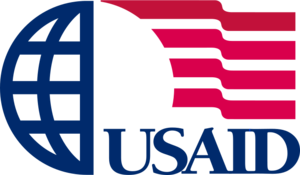USAID
(Dieser Artikel wurde noch nicht aus dem Englischen übersetzt oder enthält noch englische Textpassagen. Bitte beziehe dich vorerst auf die Informationen im englischen Artikel. Klicke dazu in der IntactiWiki-Navigation im Abschnitt "In anderen Sprachen" auf "English".)
In a February 2009 report produced by USAID, a U.S. government agency, researchers found that circumcised men were more likely to have HIV in 10 of 18 (African) countries with data available.[1] The report found condom use, not circumcision, to be correlated with HIV status. Despite this report, USAID is listed as a contributing partner and a sponsor for the "Clearinghouse on Male Circumcision for HIV Prevention."[2][3]
Inhaltsverzeichnis
Circumcision Scale-Up
USAID has studied the "scale-up" of circumcision in Africa and shows support for circumcision in numerous places on its website.[4][5][6][7]
Accelerated Saturation Initiative
In November 2010, USAID issued a "technical brief" on male circumcision as HIV prevention. In the report, USAID states that it is supporting Swaziland's "Accelerated Saturation Initiative" for circumcision by providing "implementation support together with the [U.S.] Department of Defense, the Peace Corps, and the U.S. Centers for Disease Control and Prevention (CDC)." The report goes on to say that USAID, along with UNAIDS, is providing technical and financial assistance in the studying circumcision programs in 14 African countries.[8]
Voluntary Male Medical Circumcision
USAID's support of what they call the "Voluntary Medical Male Circumcision Program: VMMC" also focused on Kenya.[9] USAID funded a VMMC based circumcision campaign propaganda video to air on television in South Africa.[10]
No Clear Pattern of Association
| ” | Levels and Spread of HIV Seroprevalence and Associated Factors: Evidence from National Household Surveys There appears no clear pattern of association between male circumcision and HIV prevalence—in 8 of 18 countries with data, HIV prevalence is lower among circumcised men, while in the remaining 10 countries it is higher.[11] |
C-Change
A USAID-funded organization called "C-Change" in Kenya is supporting "Male Circumcision Communication Toolkits" with the stated goal of "Creating demand for VMMC (circumcision)" and "facilitating a scale-up of materials" and capacity to perform more circumcisions from the government of Kenya. One of the ways C-Change is creating demand is by spreading information stating that "VMMC" prevents STI's.[12][13]
One issue of C-Change's publication included a study measuring media coverage of circumcision as HIV prevention and strategies for keeping media reports positive.[14]
PEPFAR
In September 2010, USAID, funded by the U.S. President's Emergency Plan for AIDS Relief program, along with a partner, also donated 5,000 male circumcision kits to Zimbabwe.[15]
Einzelnachweise
- ↑
 USAID / Mishra Vinod / Amy Medley / Rathavuth Hong / Yuan Gu / Bryant Robey (2009)."DHS Comparative Reports 22", Macro International, Inc.. Abgerufen 24. März 2011. "Levels and spread of HIV seroprevalence and associated factors: Evidence from national household surveys"
USAID / Mishra Vinod / Amy Medley / Rathavuth Hong / Yuan Gu / Bryant Robey (2009)."DHS Comparative Reports 22", Macro International, Inc.. Abgerufen 24. März 2011. "Levels and spread of HIV seroprevalence and associated factors: Evidence from national household surveys"
- ↑

Male Circumcision Clearinghouse: Partners and Contributors
, Clearinghouse for Male Circumcision on HIV Prevention. Abgerufen 24. März 2011. - ↑
 (Juli 2010)."National AIDS and STI Control Programme", Government of Kenya. Abgerufen 24. März 2011. "Progress Report on Kenya's Voluntary Medical Male Circumcision Programme"
(Juli 2010)."National AIDS and STI Control Programme", Government of Kenya. Abgerufen 24. März 2011. "Progress Report on Kenya's Voluntary Medical Male Circumcision Programme"
- ↑

Research: Male Circumcision and HIV Prevention
, USAID. Abgerufen 24. März 2011. - ↑

Male Circumcision
, USAID. Abgerufen 24. März 2011. - ↑
 Clark, S. / I. Fua (Mai 2003)."Program and Policy Implications for HIV Prevention and Reproductive Health", USAID/AIDSMark. Abgerufen 24. März 2011. "Male Circumcision: Current Epidemiological and Field Evidence"
Clark, S. / I. Fua (Mai 2003)."Program and Policy Implications for HIV Prevention and Reproductive Health", USAID/AIDSMark. Abgerufen 24. März 2011. "Male Circumcision: Current Epidemiological and Field Evidence"
- ↑

Fighting HIV with Circumcision
, USAID. Abgerufen 24. März 2011. - ↑
 (November 2010)."Technical Issue Brief", USAID. Abgerufen 25. März 2011. "Medical Male Circumcision and HIV Prevention"
(November 2010)."Technical Issue Brief", USAID. Abgerufen 25. März 2011. "Medical Male Circumcision and HIV Prevention"
- ↑

Kenya / HIV/AIDS
, USAID. Abgerufen 25. März 2011.
Zitat:USAID/Kenya’s HIV/AIDS program is supported by the President’s Emergency Plan for AIDS Relief (PEPFAR). PEPFAR, a five-year, $48 billion program, is led by the U.S. Global AIDS Coordinator, in conjunction with USAID, the Department of Health and Human Services (including the Centers for Disease Control and Prevention), the Department of Defense (DOD), the U.S. Peace Corps, and the Department of State.
- ↑
 (Dezember 2010).
(Dezember 2010). VMMC Soccer Videos from Kenya
, VMMC.m4v. Abgerufen 28. April 2011. Short video vignettes with a soccer theme that was field tested in communal video houses in Nyanza, Kenya during the 2010 World Cup Soccer broadcasts. - ↑ Levels and Spread of HIV Seroprevalence and Associated Factors: Evidence from National Household Surveys (February 2009)
- ↑

C-Change Develops Male Circumcision Toolkit for Kenya
, C-Change. Abgerufen 25. März 2011.
Zitat:...[Male Circumcision] reduces risk for men...
- ↑
 (1. Oktober 2010).
(1. Oktober 2010). Male Circumcision
, C-Change. Abgerufen 25. März 2011.
Zitat:VMMC Communication Toolkit in Kenya
- ↑
 Wang Al a; Duke W b; Schmid GP b (Dezember 2009).
Wang Al a; Duke W b; Schmid GP b (Dezember 2009). Bulletin of the World Health Organization: C-Channel Issue 15
, C-Change. Abgerufen 25. März 2011.
Zitat:Print media reporting of male circumcision for preventing HIV infection in sub-Saharan Africa
- ↑
 Own Correspondent (12. September 2010).
Own Correspondent (12. September 2010). US donates 5 000 male circumcision medical kits
, The Standard. Abgerufen 25. März 2011.
